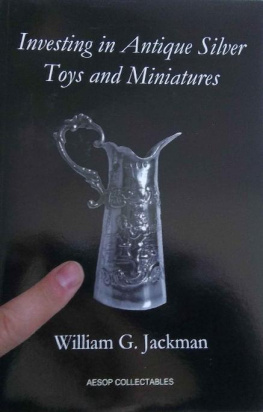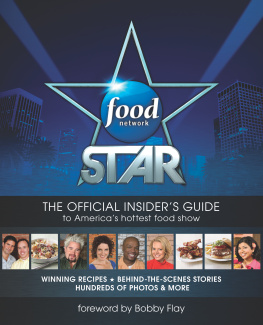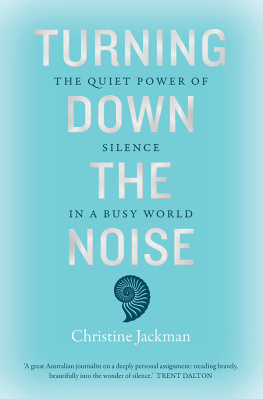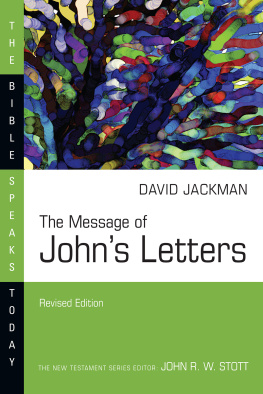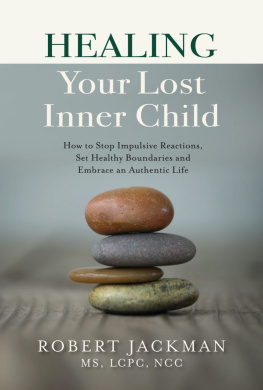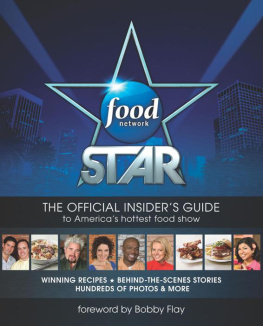Contents
Eating In
Fruit (Mostly)
Vegetables
Meat
Sausage
Fish and Seafood
Sauces, Condiments, and Preserved Foods
Cereals and Breakfast Food
The Bakery
Ice Cream and Candy
Eating Out
Burgers
Chili, Chili, Chile
Stews, Gumbo, Soups, and Chowder
Seaside Food and Sushi
Hot Dogs
Barbecue
Sandwiches and Pies
Deli Food, Salads, and Cheese
Eating Out: Breakfast
Eating Out: Lunch and Dinner
State-by-State: Farmers Markets, Festivals, and Fairs
Why There Isnt a Kids Food Chapter
Pizza
The Dessert Trolley and the End of the Meal
When one considers the millions of permutations of foods and wines to test, it is easy to see that life is too short for the formulation of dogma. Each eater can but establish a few general principles that are true only for him.
A. J. Liebling, Between Meals (1962)
G ood food is one of lifes great pleasures. A lobster roll from a seaside store in Mainebig chunks of meat touched with mayonnaise, topped with paprika, and piled into a toasted hot dog roll. A North Carolina pulled-pork sandwich with peppery slaw cut with vinegar. A breakfast burrito packed with chorizo and eggs smothered in cheese and green chile in a Santa Fe restaurant. Summers best sweet corn and tomatoes you serve with your grilled chicken. A perfect sweet white nectarine. Simple, memorable, delicious.
In an age of elevated food and diet anxiety, we still deserve to enjoy what we eat. As A. J. Liebling points out, theres so much food (and drink)surely even more than was readily available in his day. Still, its easy to get stuck in a rut of bland familiarity. As far as what we eat is concerned, like the rest of the industrialized world, America has moved from being a nation of food producers to being a nation of eaters. In 1900, half the workforce toiled on farms. Today, while more than twelve million Americans work in restaurants, and four in ten people will do so at some point in their lifetimes, there are less than one million full-time farmers and farm-workers.
Were much farther removed from the original sources of our nutrition than at any other time in history. This is not literally the case, for as the population increases and shifts around the country, subdivisions encroach toward and onto what was once farmland. The separation is apparent, however, in how we shop for our food. Has there ever been a greater disconnect between what we eat and the food supply whence it comes? For most of our produce, we rely upon supermarkets and what they decide to stock. Before refrigeration and mass transportation, the food we bought was grown and raised nearby. Now we have to be reminded to shop local, to buy from our neighboring farms. And when we eat out across this enormous country, we often eat the same stuff from the same restaurant chains.
So much of what we eat is banal and bland, even when its not particularly healthy. A modest amount of exploring, away from the processed and everyday and toward the fresh and unusual, yields whole new avenues of food choice. This is what this book tries to do, to respectfully point out realms of food experience you might enjoy. Researching this book, I discovered many different foods I didnt know I liked; much of them I didnt know even existed. Im ready to keep turning my thoughts afield: to new towns, new regions, new eating experiencesand I hope that this book will inspire you to do the same.
The best place to start looking for new food to eat is right where you are. Think, what grows locally? In many towns, farmers bring the produce to the people, at green markets that are springing up to satisfy our increased interest in fresh food. Seek and you will probably find a cornucopiathe never-ending horn of plenty of mythology overflowing with food and drink. It may well look something like what Prudence Wickham grows in the first chapter.
So what are the Eat This criteria? One key word is local . (Think global, eat local, as someone smart once said.) Our focus is on locally bought food and neighborhood restaurants. Im not interested in fancy restaurants, such as the one I went to where the waiter smugly made a point of correcting my pronunciation of a word on the menu. Even if he was technically correct, I felt belittled. The food itself is more important than the cool factor of the restaurant or any particular chef. Im certainly not qualified to anoint the best of anything. (Who is?) Its very easy to get in deep water making claims about the best barbecue, for instance. The 1001 things are picked out in bold type in the text. At the end of each chapter I have picked out a couple of places and dishes that I particularly like and are worthy of a visit.
Nor is authenticity a particularly vital consideration. Its invariably a tiresome argument, but like all but the most zealous of libertarians, Im prone to draw the line here, but also over there. (I wont abide carrots in my Irish stew, but I feel that my proprietary attitude is allowed because my mothers Irish.) The key factor is, the food just has to be good .
What I seek is a mouthwatering cross section that everyone, including me, can seek to experience. After living my first twenty-eight years in the United Kingdom, I moved to the United States in 1992. Ive been constantly amazed and excited by the food Ive found in my new home country. All the time, Im discovering a New World of eating. Throughout the book, Ive relied on the help of local experts (and my friends) to point the way for me. Ive tried much of the food discussed in this book, but what I havent comes recommended by other people in parts of the country Ive yet to visit. This book has turned into my personal reference guide and eating to-do list. Not much beats happening upon a place on the way from one town to another, tasting something youve never tried, and loving it. I cant wait for the new eating delights that await me. I hope you can join me for some of them.
As for the subtitle, Ive never found that dieting, as such, works for me. The thought of being on a diet is debilitating, but I do try to watch what I eat, which isnt the same thing as being on a diet. Within the bounds of generally healthy and sensible eating there is a lot of latitude, which is where this book resides for me.
A word about the organization of this book. The most efficient way to categorize the food mentioned here was to think of how we eat it. Unless we grow the stuff ourselves or forage for it in woods and hedgerows, we get sustenance in one of two ways. Either we go shopping for ingredients that we prepare ourselves or we pay someone else to make the food for us in a restaurant or a similar commercial enterprise. So, in part one, we look at the fruits and vegetables, the meat and fish, the sauces and preserves we prepare at home or eat as they come. Along the way, we might digress to discuss a little of the history of one food, or how another is grown or raised. (I find a little bit of context makes for a tasty condiment.) Then, in part two, there are the individual dishes and meals we buy complete. So the sausage is in the first section, the hot dog in the second. Part one and part two: ingredients and meals; eat in and eat out.
Please note that within this general rubric, were not sticking to any hard-and-fast rules. Many people, this shopper included, are undisciplined food marketers. Out we go to buy some fruit, and a couple of pounds of sausage find their way into the basket. And were quite likely to stop at the ice cream stand on the way back home. Some terminological inexactitude and category laxity are allowed, where its convenient. So, for example, there are restaurants mentioned in part one. For our purposes, the tomato is a fruit and sweet corn, a vegetable. And what to do with candy and ice cream, which are produced for us? They dont constitute a meal, at least not usually, so they go in part one, where the sauces and preserves reside for the same reason. Pastrami sandwiches stay in the deli section and not the sandwich section. To smooth over any inconsistencies and to facilitate navigation, there are two indexes, one by food and one by region, and there is contact information for the establishments mentioned.


